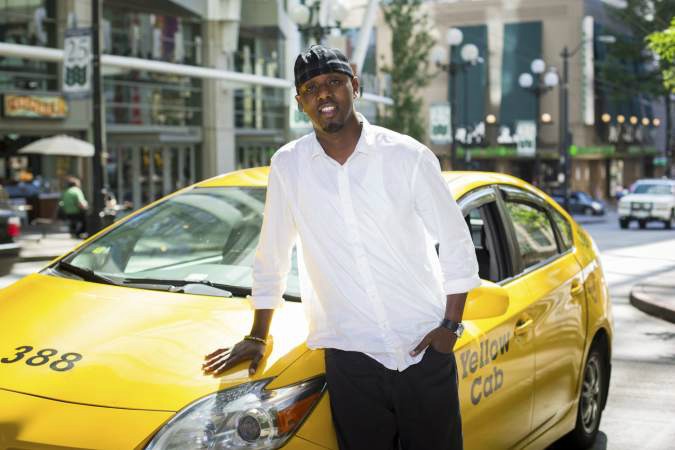The unionized taxi drivers, it seems, have made lemonade out of lemons.
Or, if it’s not exactly lemonade, at least it’s palatable.
That’s the feeling one gets after speaking with Dawn Gearhart, a spokesperson for Teamsters Local Union 117, which represents the just over 500 local taxi drivers of the Western Washington Taxicab Operators Association. She says the drivers she fights for took what they could get – and that’s about it – in the compromise deal hammered out by Seattle Mayor Ed Murray announced yesterday.
So far the aspect of the Murray deal people have focused on has been predictable. If the City Council signs off on the plan (a significant if), app-based rideshare services like Lyft, UberX and Sidecar will finally have a framework for operating legally in the city, minus the caps on drivers created by previous City Council action back in March. The caps had been a big sticking point for rideshare companies, as you likely heard, and collectively they’ve sought to repeal the limits using the referendum process. In this regard, the Murray deal – which would institute beefed-up insurance and training requirements for drivers – can be considered nothing short of a major victory for the rideshares (again, assuming City Council goes along for the ride). It likely adverts a ballot fight in November, and paves they way for rideshares to exist, and potentially prosper, in Seattle without limiting the number of drivers on the street.
“This agreement is a step in the right direction, and we look forward to working with the City Council to get it enacted into law,” Katie Kincaid, an executive with Lyft, said via an official press release from the Mayor’s office. Her sentiments were echoed by Uber general manager Brooke Steger.
The victory for for-hire drivers is just as clear-cut, if not slightly less dramatic. For the first time ever in Seattle, Murray’s deal would allow for this relatively new and historically maligned sub-genre to pick up street hails legally – a right the group has fought for since the number of active for-hire licenses went from 50 in October 2011 to 199 in February 2012. It’s a small regulatory tweak that has the potential to make life a lot easier for companies like Eastside for Hire, which is currently banned from offering anything but pre-arranged trips, like all for-hires in the city.
For taxi drivers, however, the gains in Murray’s deal are less fulfilling – if not completely imaginary. This has a lot to do with the fact that the primary objectives these drivers have fought for, at least publicly – like cracking down on unregulated rideshares and for-hires that pick up street hails illegally – have been more about limiting the developing competition than winning new advancements. “This is going to devastate the taxi industry in Seattle,” a dire Chris Van Dyk of Green Cab Taxi told Crosscut in the aftermath of Murray’s announcement.
Gearhart doesn’t agree with that, but she does admit that taxi drivers found themselves in a negotiating pickle. It’s the taxi drivers, primarily, that wanted to cap the number of rideshare drivers – but that wasn’t going to happen. It’s a reality that she says became increasingly clear given the mayor’s stated stance on the subject, not to mention the direction of public opinion – which has seemingly swayed in favor of the rideshares and stood to be validated at the ballot box if it came down to it. One way or another, Gearhart says, the rideshare driver cap wasn’t going to survive in Seattle.
“The likelihood of there still being a [rideshare driver] cap was very low,” Gearhart explains, saying the Western Washington Taxicab Operators Association “knew that the mayor was not in support” of one. She says the taxi union’s stance thus became: “If this is going to be the reality moving forward, how can we make the best of it?”
What the taxi drivers were able to win through the Murray deal, Gearhart says, is 200 more taxi licenses over the next four years, ten new taxi stands, a more level playing field, some financial support for wheelchair-accessible taxis, and – most importantly – the guarantee on investment that comes from making taxi licenses the sole property of the operators who own them.
To an outsider, that last part is where things can get confusing. For years taxi operators in Seattle have bought, leased and sold taxi licenses on the open market as though they already were their property – sometimes for hundreds of thousands of dollars. Problem is, the city and county have actually owned the licenses – and enjoyed the ability to revoke one at any point, making the investment taxi drivers make precarious and risky. Buying the rights to a license you don’t actually own is a gamble in the truest sense of the word, and – for taxi drivers – the biggest victory in the Murray deal would be an end to this charade.
In other words, Gearhart says the Murray deal offers much needed “job security.”
“To you and I it doesn’t seem very substantial,” Gearhart admits.
But it is. Or, it’s as good as the taxi drivers could do … for now.
“It’s a good deal, but it’s not great,” says Gearhart, who indicates that she’d nonetheless like to see it approved by the City Council “as is” while the union continues to work for incremental changes elsewhere.
“The issues of equity [for taxi drivers] still remains,” she says. “There was no way to getting a perfectly level playing field.”








